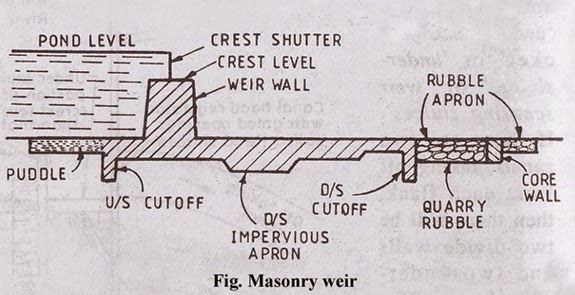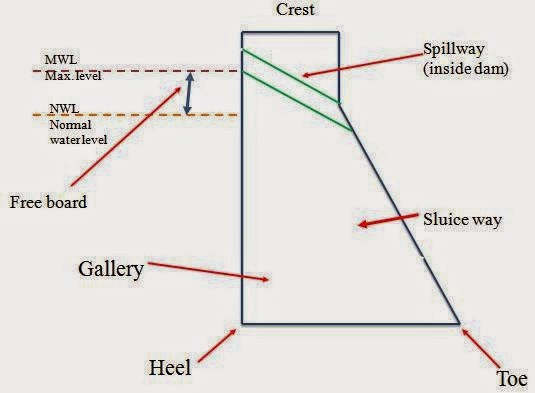Dam Failures
Dam Failures
 |
| failure dam |
Dam failures are of particular concern because the failure a big dam have the potential to to cause more of death and destruction that the failure of any other manmade structure. This is due to of the destructive power of the flood wave would be released by the sudden collapse of a large dam. Tailings dams, sometimes stored toxic materials and may pose additional dangers eg tailings dam Omai, Guyana 1995 failed to release cyanide sludge and Stava Tailings Dam, Italy failed in 1985 killing 268 people. Many dams, large and small, have failed but only a few have had a significant impact on the practice of dam design and engineering geology. The most common causes of dam failures are:
Embankment dams overflow due to improper discharge capacity of the spillway to pass flood waters. This is one of the most common causes of dam failures and has nothing to do with the geology of the dam site. Any dam fail if the landfill is too small and floodwaters rise high enough to flow over the top of the dam wall. The estimate of the magnitude of the flood peak of a dam will have to survive your life is a science that has undergone continuous evolution in the last century with the result that many dams built decades ago are judged inadequate spillway though the spillways were designed for safety standards were accepted as appropriate at the time of the construction of the dam. Many millions of dollars have been spent improving the handling capabilities of many existing dams, both embankment and concrete dams flood as a result.
The Burrinjuck Dam Safety Improvement flood project is a recent example.
Failures in construction methods (eg, inadequate compaction of fill) or using the wrong type of building materials (eg silt) can lead to internal erosion or piping failures embankment dams. An example is the failure of Teton Dam in Idaho, USA 1976.
Geological problems with the foundation of the dam. The failure of the dam of San Francisco falls into this category. After the failure was found that some of the foundation rock, a conglomerate, rock disintegrated when immersed in water so that the rock lost all his strength when saturated. This is exactly what happened as the newly completed dam filled with water for the first time shortly after the dam failed. Another example of a dam break due to foundation failure is the dam of Malpasset in France, which failed in 1959. This was the first drop in a modern, thin arch concrete dam.
Landslides that fall into the storage tank, sending a wave of water on top of the dam can cause a dam failure, or the prey can survive if they are concrete, but a destructive flood can still devastate the river valley downstream as happened in the Vaiont dam in Italy in 1963, when more than 1,900 people died.
Earthquakes can certainly cause damage to dams, but complete failure of a large dam due to earthquake damage appears to be very rare. Lower San Fernando Dam in California, USA left during an earthquake in 1971 that caused the filling into the dam wall to thin resulting in the collapse of the upstream of the dam. A disastrous flood was only prevented because the reservoir level became lower at the time of the earthquake and no water escaped downstream.
Dams are likely to exist, perhaps for hundreds of years, even after they are no longer needed for its original purpose. During these years, alterations endanger the operation of the dam and / or structure can lead to failure South Fork Dam eg (Johnstown), which failed in 1889. Improper operation of a dam at any time can cause overflow and failure for example, Euclides da Cunha Dam, Brazil failed in 1977.


Comments
Post a Comment